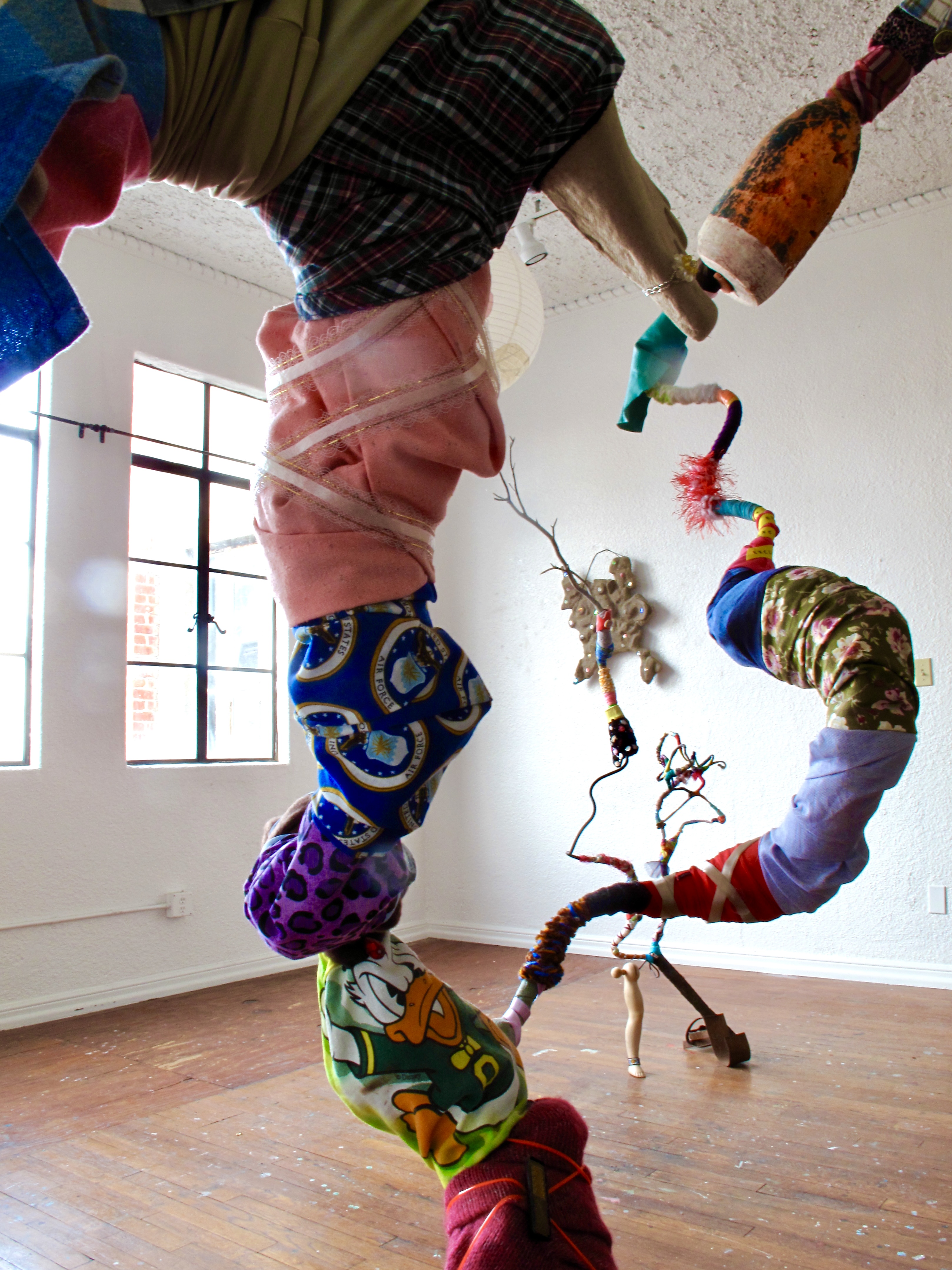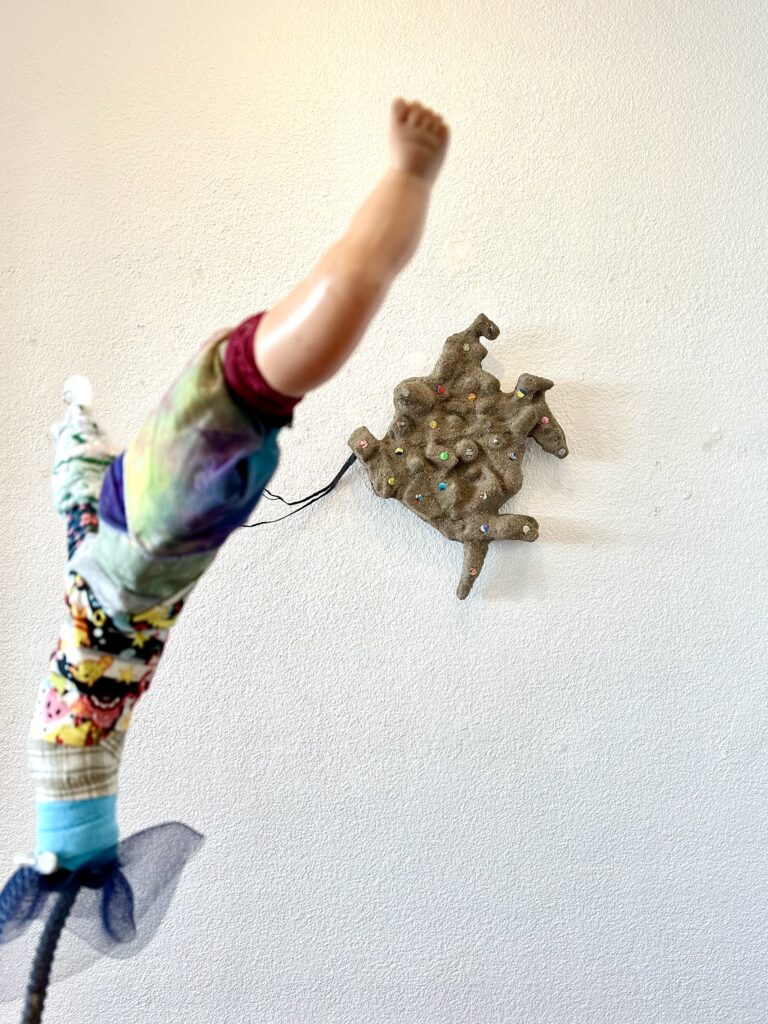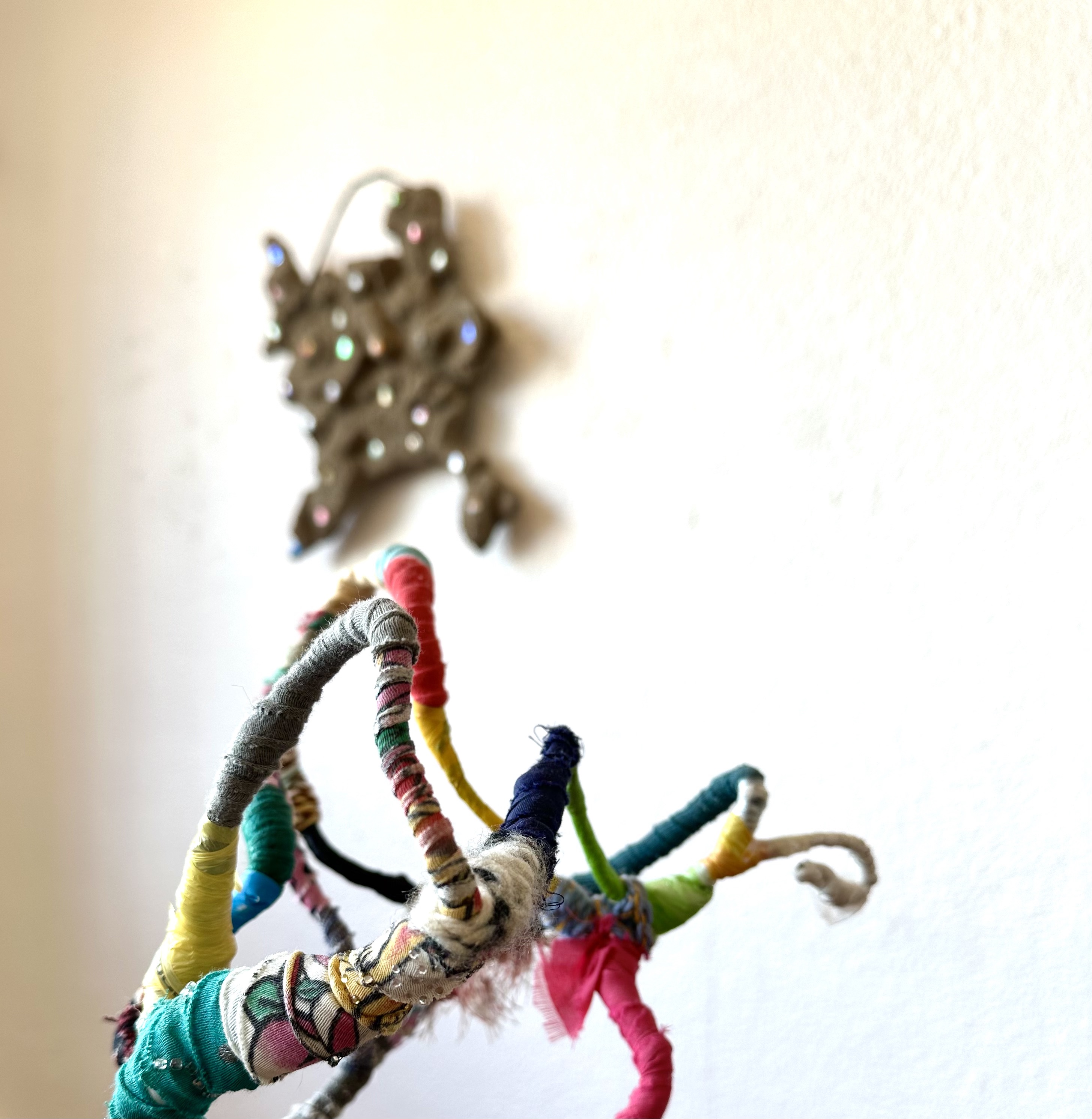
03 Feb Gina Herrera: Artist, Teacher, Environmentalist
By Liz Goldner
Gina Herrera’s artwork is a reflection of her journey into self-knowledge and realization about the world around her. She aspires to help save our planet; and she does so by employing in her work natural materials, including branches, rocks, cocoons and nests. These elements, along with colorful cast-off fabric scraps, plastics, buttons, ribbons, jewelry, domestic tools and military medallions, are affixed to frameworks, made of rebar or reinforced steel, which mirror human forms.
Herrera also incorporates into her work barbed wire, sticks, straw, skulls and small toys. Most sculptures are freestanding with outstretched arms and legs. Others hang from the walls. The artist explains that all of her pieces are lumpy, invoking a sense of mystery and even alien aspects.

Most of Herrera’s art pieces possess anthropomorphic aspects with their unusual arms and legs and abstract faces; and they appear to be embarking on journeys throughout the galleries they inhabit and into the larger world. “My art pieces want to be human,” she says, “I give life to discarded things that we take for granted.” She adds, “Observing how individuals engage with my creations is a perennial fascination. Their interactions encompass a multifaceted exploration of my work, whether it be the materials I’ve chosen or the intricacies I’ve woven into my sculptures.” Indeed, her artworks’ human-like characteristics render them as unique and non-derivative in the assemblage art genre, of which she is a part.
Herrera is of Native American (Tesuque Pueblo) and Costa Rican heritage, originally from Chicago, residing in Southern California where she teaches art, in addition to making it. Born in 1969, she was enamored with nature and with animals, including the domesticated and the wild, from an early age. Combining these loves, which draw in part from her indigenous heritage, with art — her other early passion — this busy lady has striven for decades to express her environmentally oriented passions in her artworks.
Herrera further encourages her completed pieces to reveal themselves. “Through my art, I aim to awaken individual and societal consciousness, examining and healing our relationship with Mother Earth. My diverse background converges in my artistic practice, reflecting my deep connection with the environment and my role as an artist in addressing pressing issues of our time.”

Herrera received her BFA in Art Education from the Art Institute of Chicago and an MFA in Studio Arts from the University of the Arts in Philadelphia. Her first career was in fashion design, as she sought to combine artistic expression with a means to make a living. But after four years in this field, she became disheartened by the disingenuity of the people she worked with. She left fashion design, and spent 25 years in the United States Military, partially in the reserves, while continuing to make her art. She was also was deployed overseas in Iraq. This experience strengthened her awareness of the vast amount of waste that humankind creates, making her more passionate about using discarded materials in her assemblage work.

In addition to her artwork, Herrera gives back to her community as a full-time high school and adjunct college art teacher. She has exhibited her work in several Orange County art venues, including the Orange County Center for Contemporary Art and the SHE/THEY Gallery, both in Santa Ana, the Irvine Fine Arts Center and the Brea Gallery, and throughout California and nationally. Her work will be on display at the Los Angeles Art Association, 825 N. La Cienega Blvd., L.A., March 23-April 26. She has received several grants and has been shown on Peacock TV and Hulu.
Gina Herrera’s drive as an artist, teacher, environmentalist and humanistic individual — who gives back to her community and to the world — is propelled by her persistence and laser-like focus. Her expertise and success are already impressive. Those who know and work with her expect her to achieve her wildest dreams as an artist over the next several decades.



Sorry, the comment form is closed at this time.